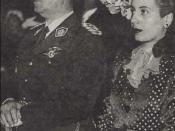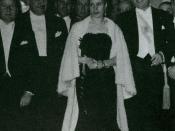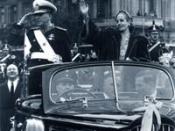The image of the woman in Latin America culture is one that has traditionally been quite askew from reality and ultimately alienating. Unlike the American feminine mystique, which was a media creation, the conceptualization of women in Latin American culture is one that is deeply engrained in the consciousness of Latin people. It is commonly referred to as marianismo, or "Mary-ism" referring to the idea that women must reflect the Catholic ideal of the Virgin Mary. This combined with machismo; an ideology that supposes men rigidly defines males' roles in the culture, served to be a great obstacle to the women's movement in Latin America. These ideas are commonly explored in twentieth century Latin American literature. Tradition enslaves Tita, the passionate main character of Laura Esquivel's (1951-) Like Water for Chocolate (1989). The idea is further explored in Rosario Ferre's (1942-) novel The House on the Lagoon (1994) which reveals its traces across two generations of families in Puerto Rico.
Probably the most dramatic display of Latin American ideologies of women can be witnessed in My Mission in Life (1952), the writings of Eva Peron (1919-1952), in which she idolizes her husband Juan Peron and calls for women to essentially be "women." The works of these three Latin American women serve to provide a holistic view and profound understanding of the roles of women in the Latin American tradition, which impeded liberal ideologies of feminism and equality.
In Like Water for Chocolate, Tita, the protagonist, is a woman whose life is planned out for her before she is even born. According to the traditions of her family, as the youngest daughter she is bound to never love or wed, so that she may take care of Mama Elena in her old age. This reflects both the chauvinist idea that women...


